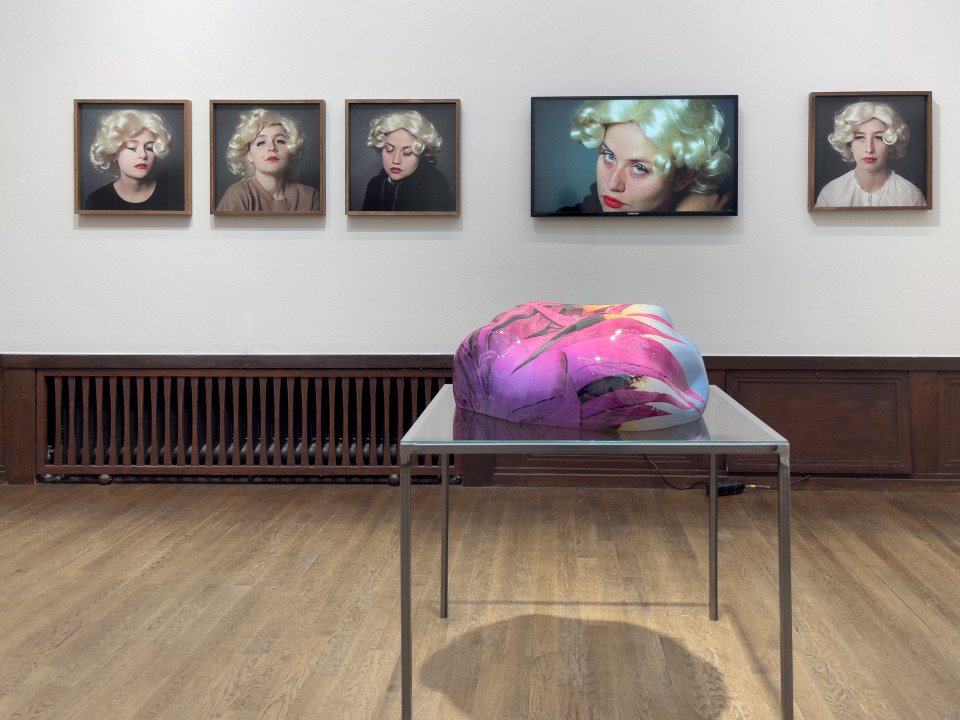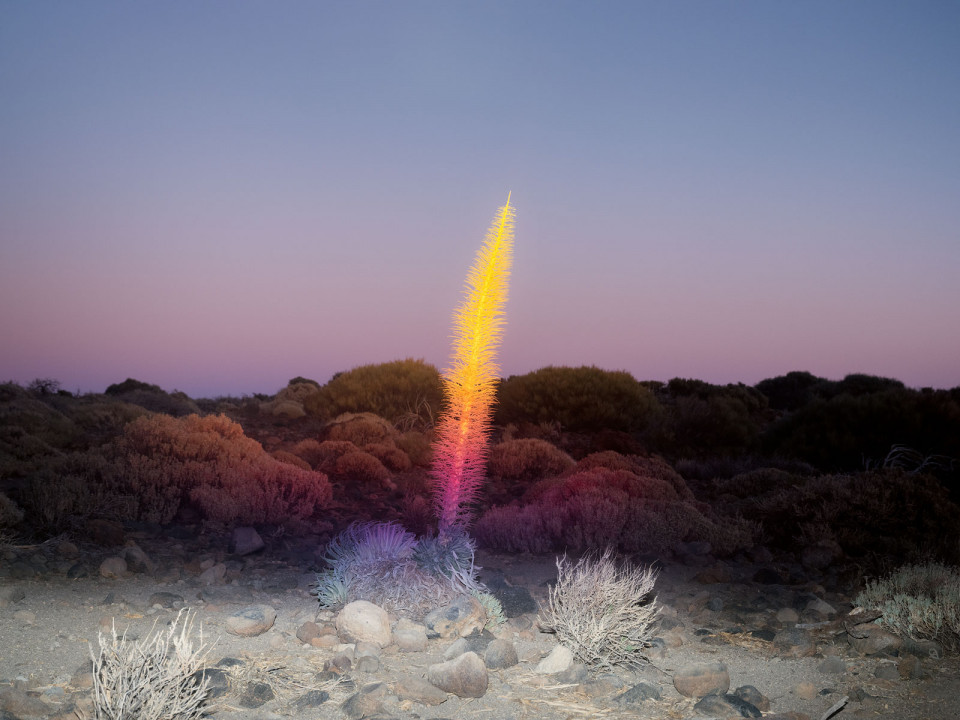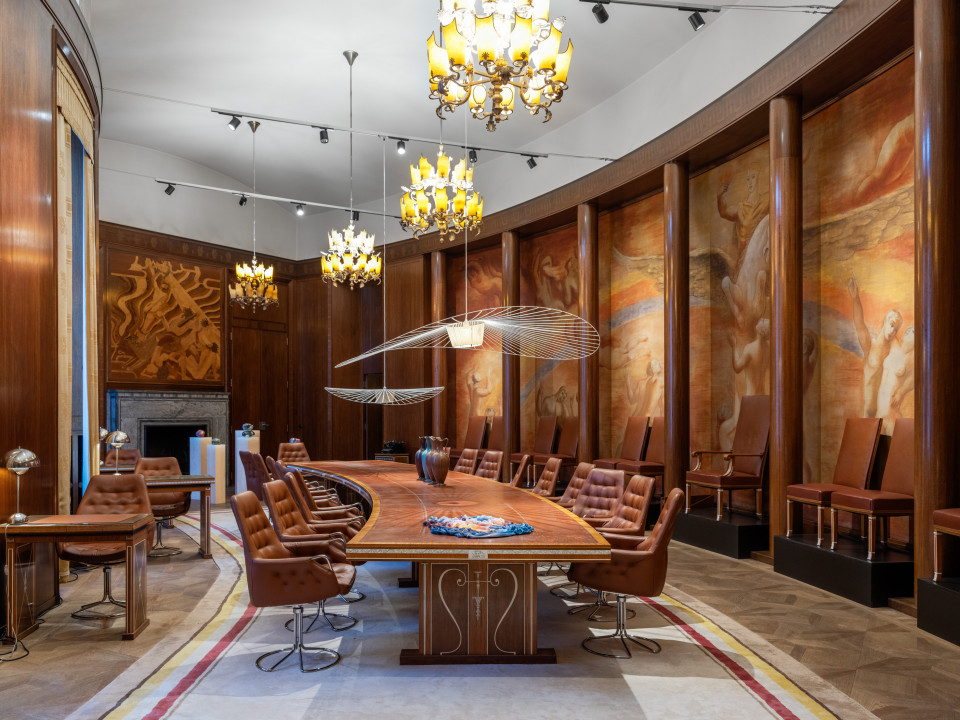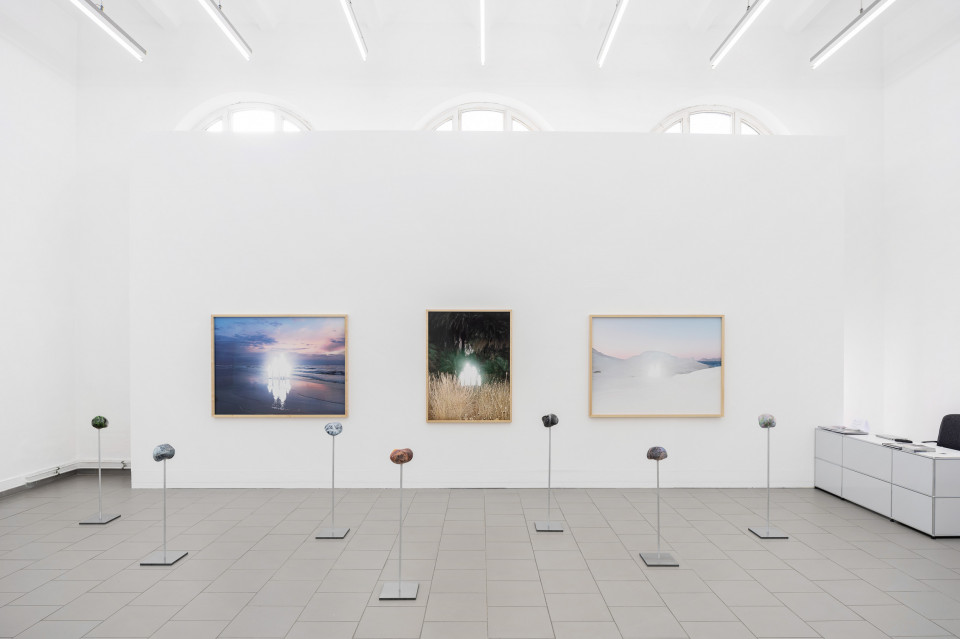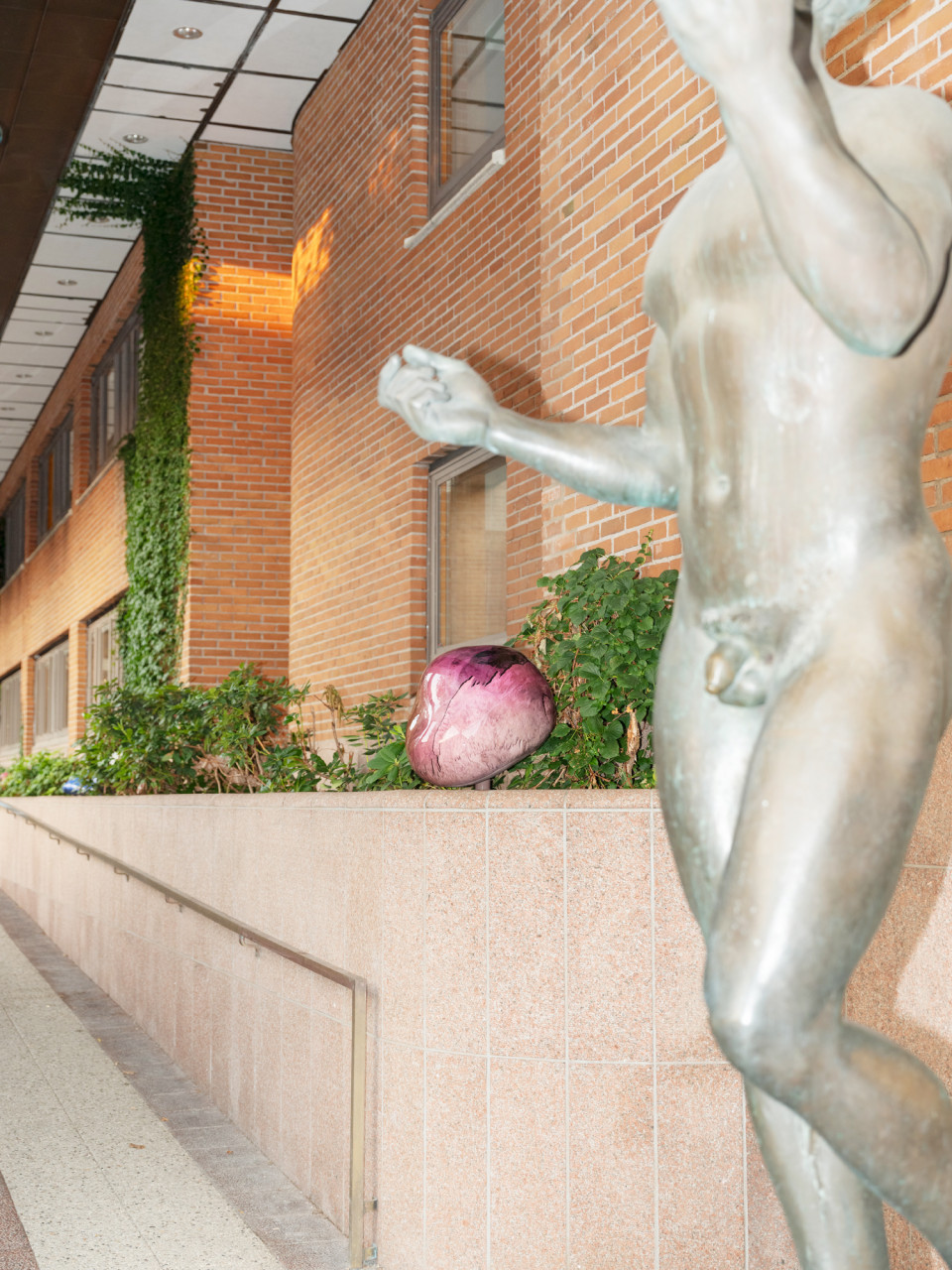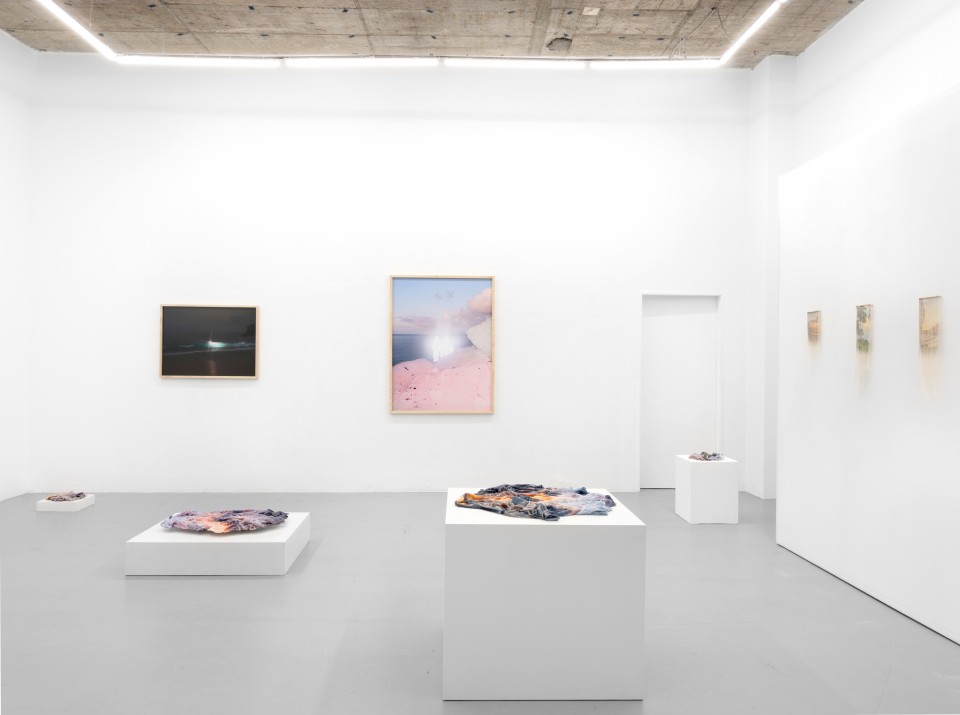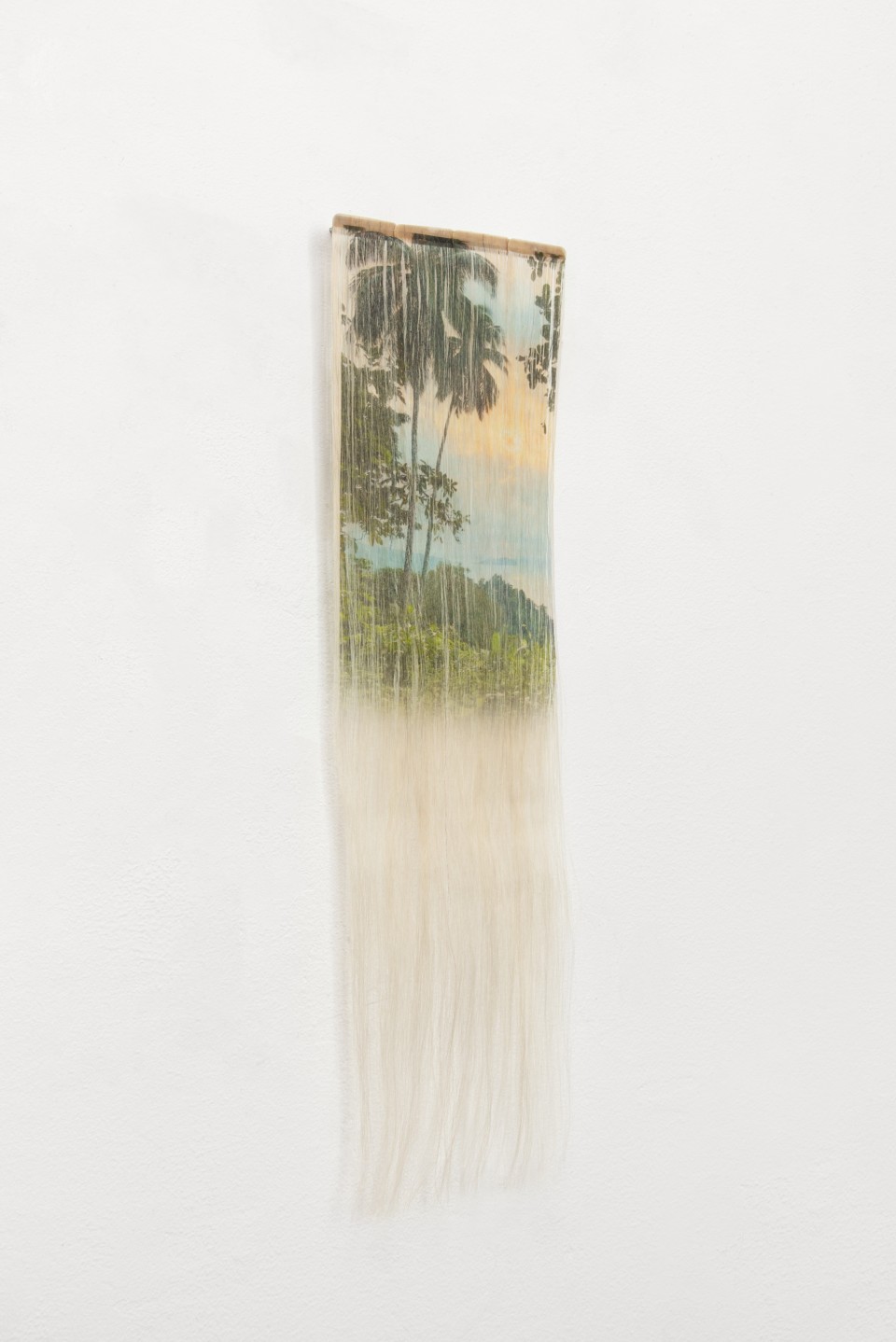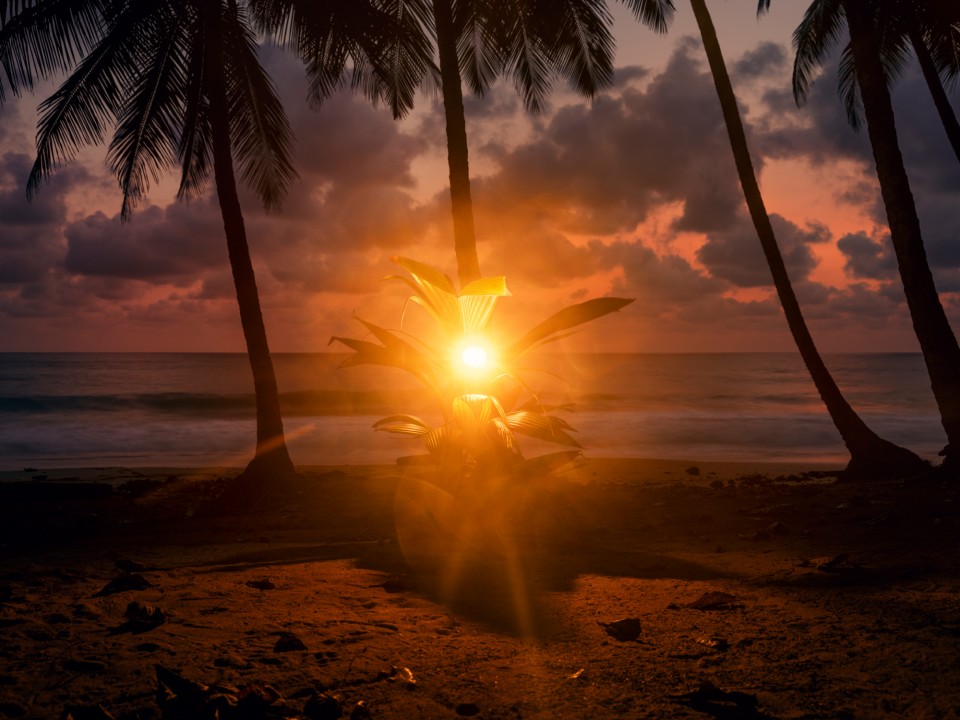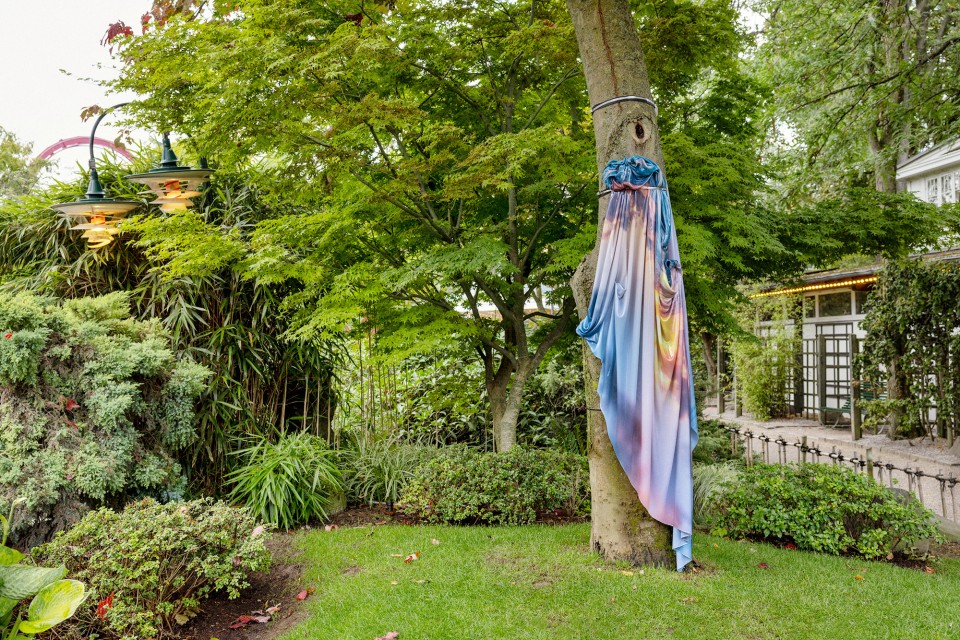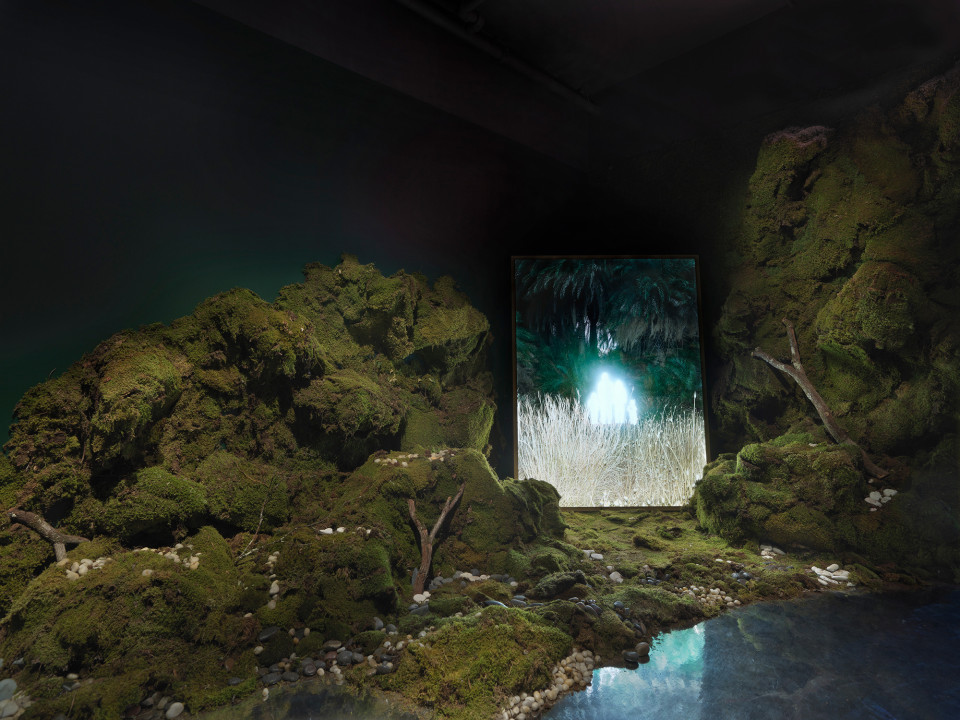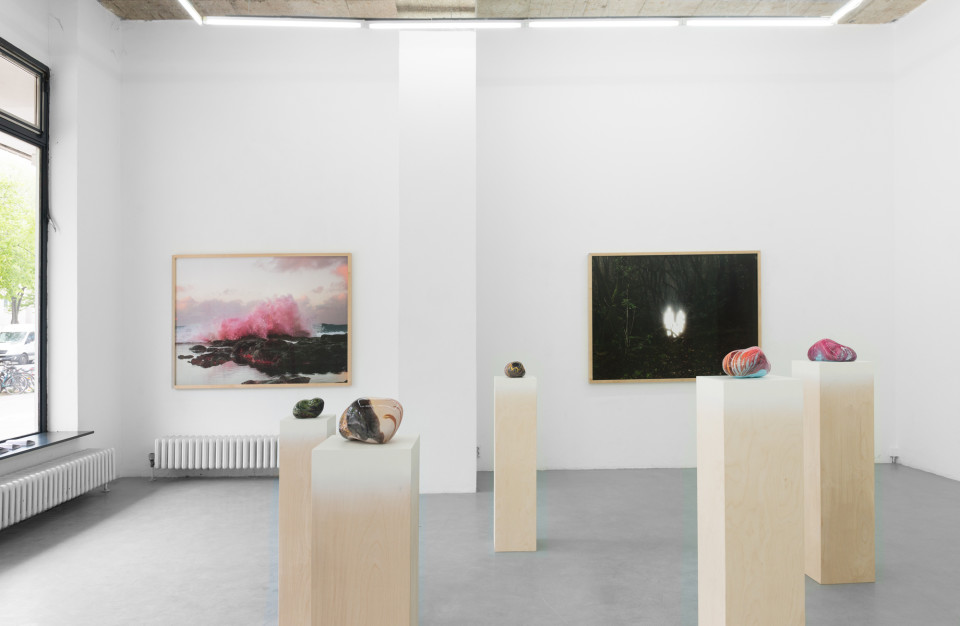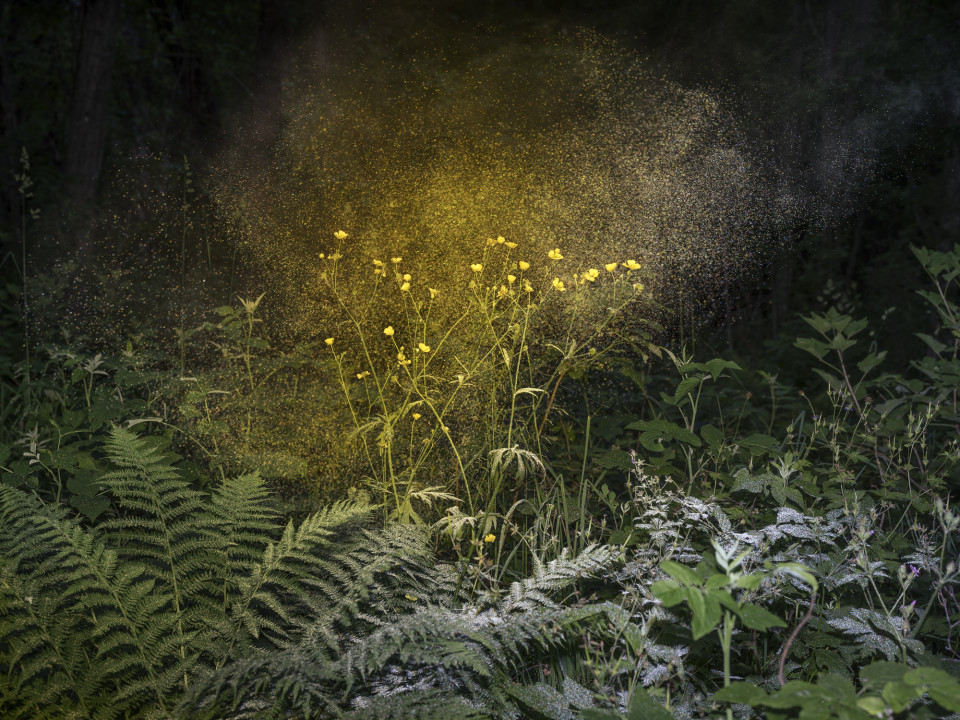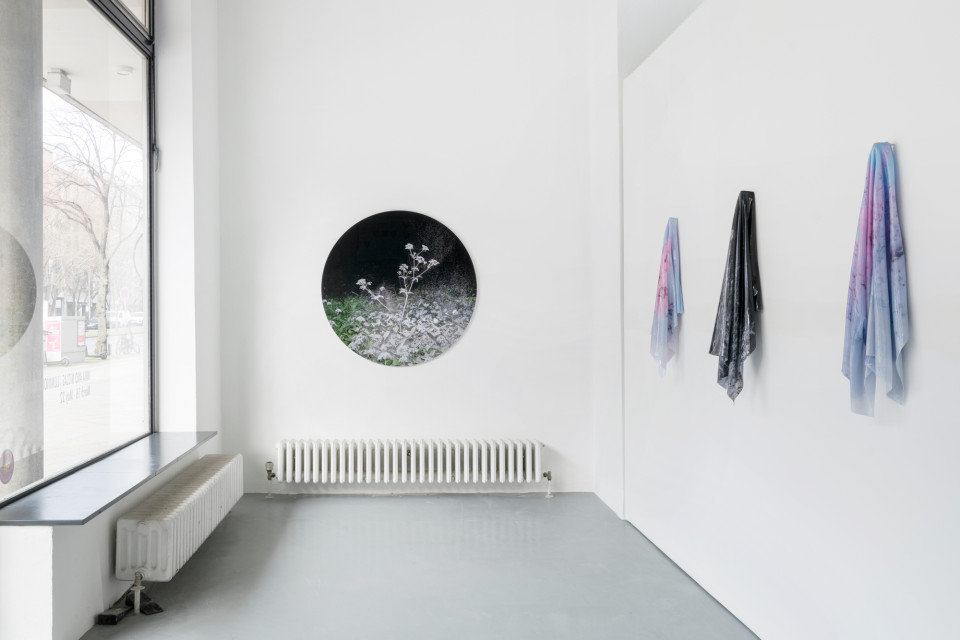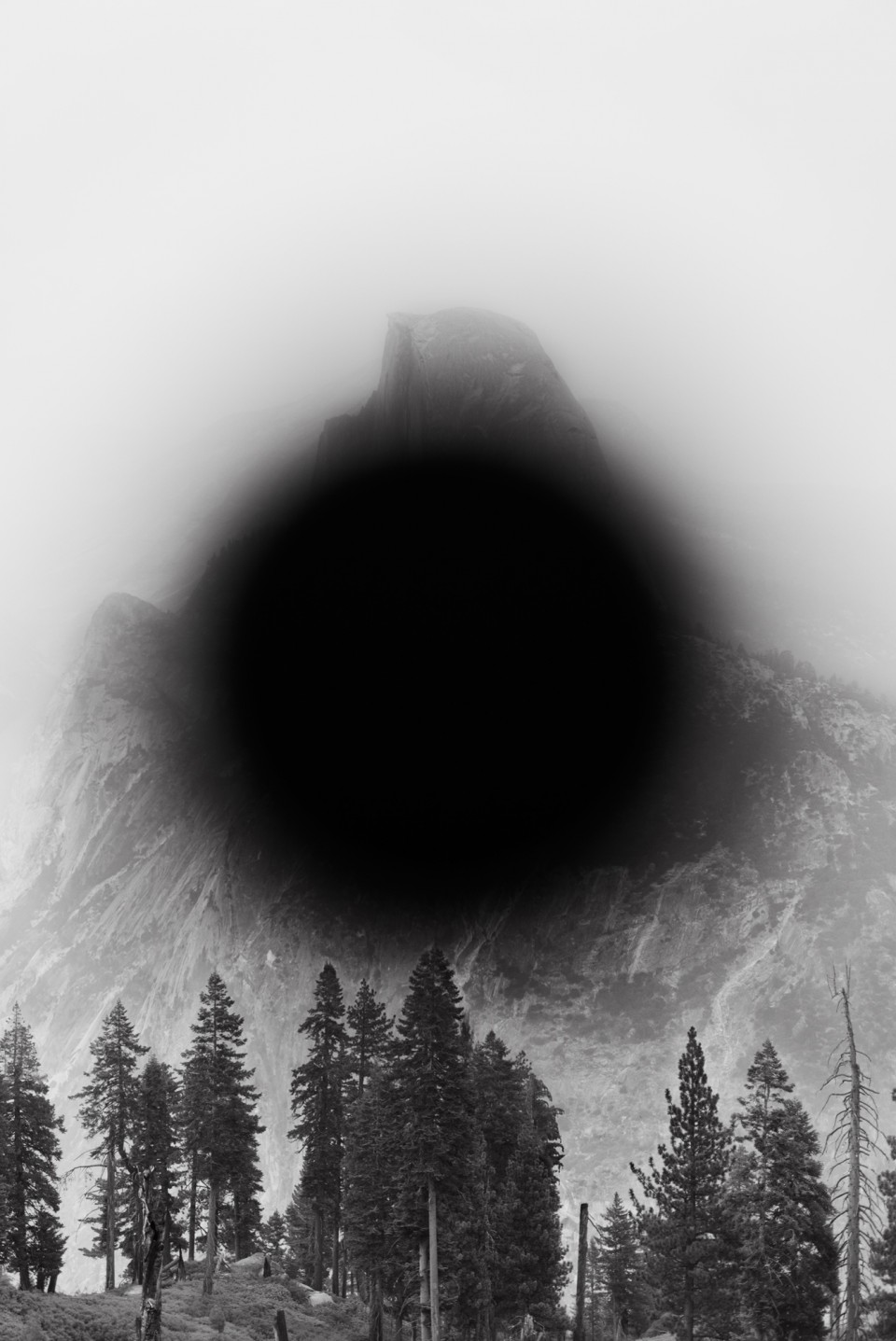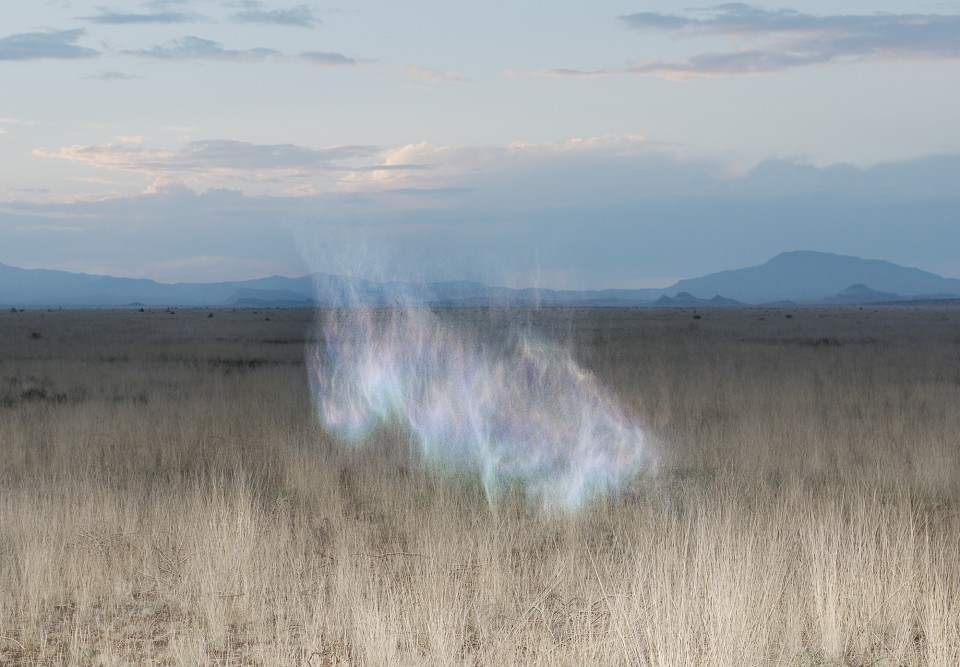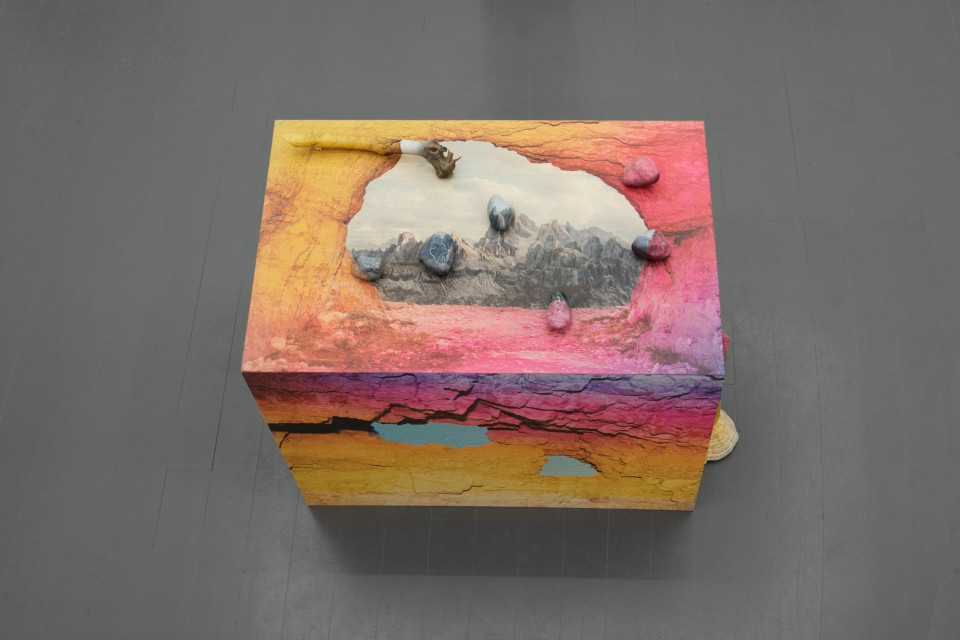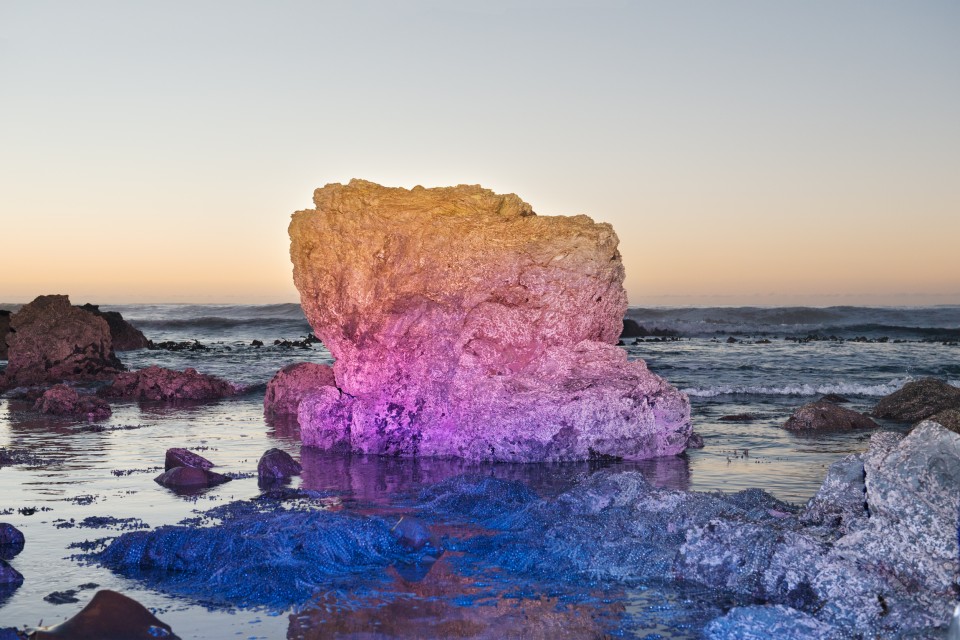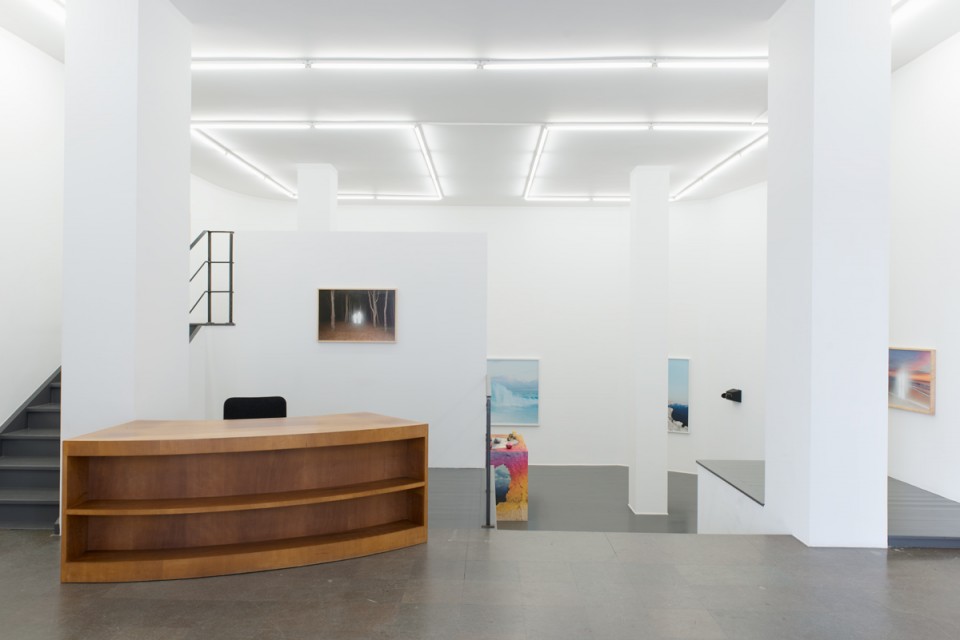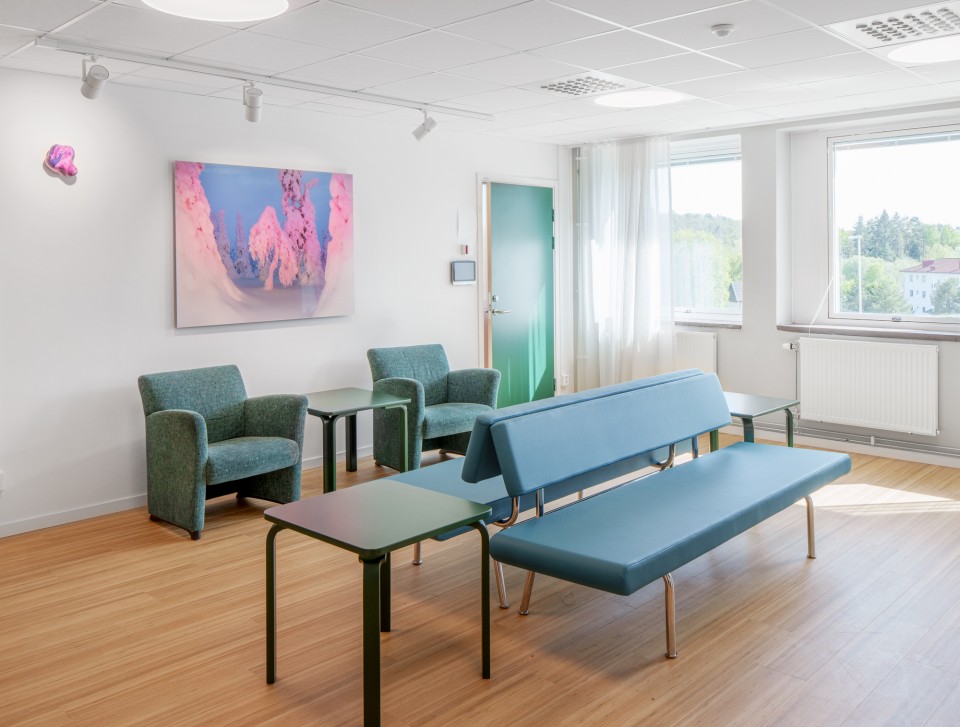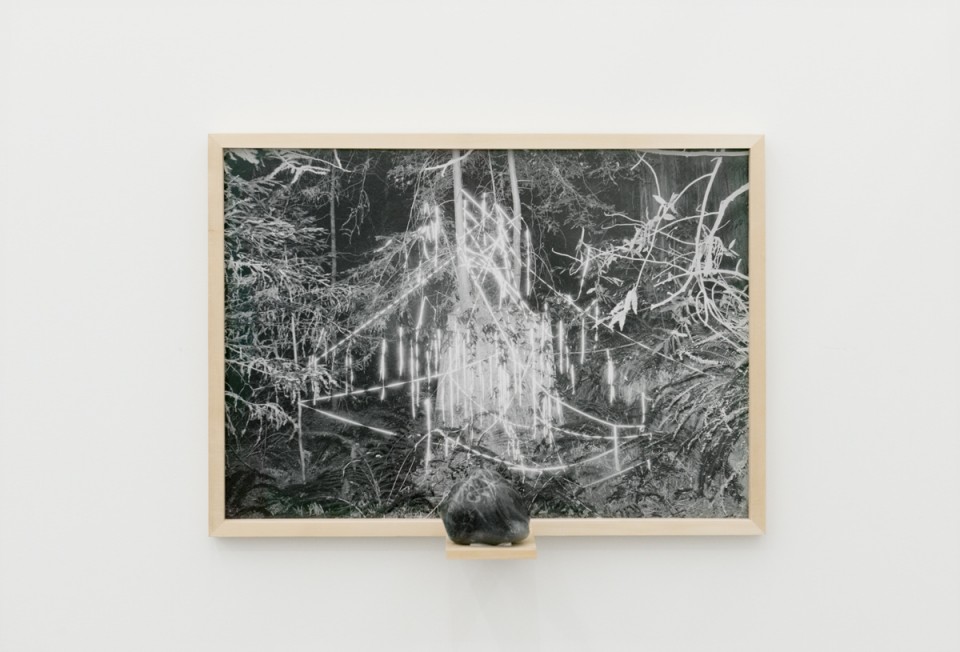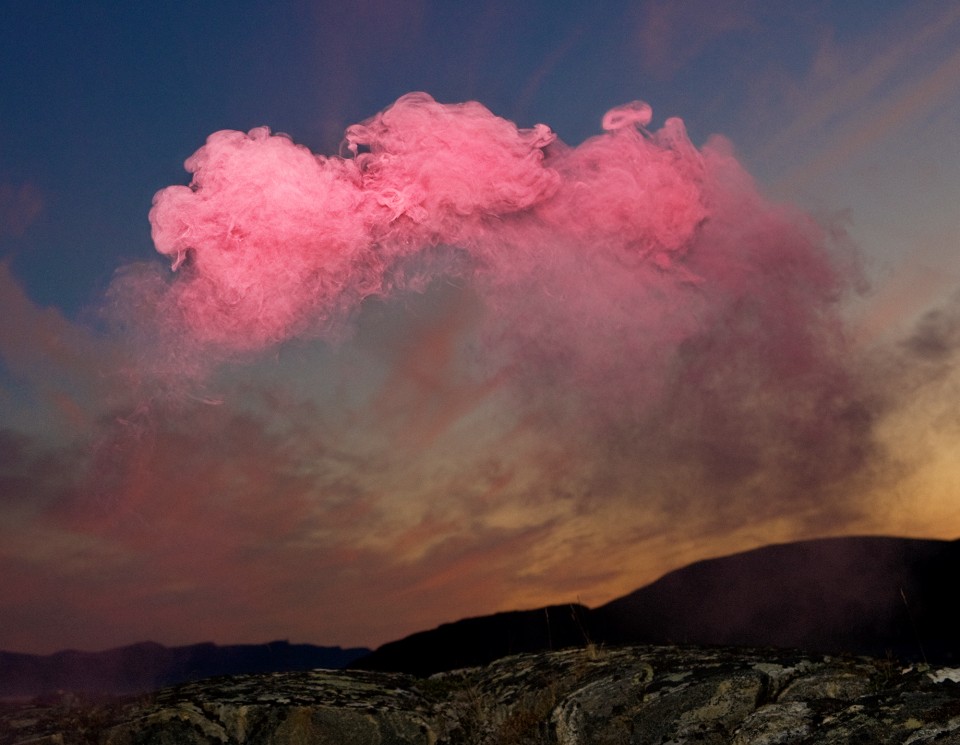Contact
Inka & Niclas Lindergård
inkaandniclas@gmail.com
+4673 4402455
Studio: Ateljé Koltrasten, Liljeholmsvägen 8A, 117 61 Stockholm, Sweden
Instagram
Artist video
Berlin
Dorothée Nilsson Gallery
Potsdamer Straße 65, Berlin, Germany
www.dorotheenilsson.com
dn@dorotheenilsson.com
Zurich + Amsterdam
Bildhalle
Stauffacherquai 56, Zurich, Switzerland
Willemsparkweg 134 H, Amsterdam, The Netherlands
www.bildhalle.ch
info@bildhalle.ch
Texts
English
Bio
Extensions book essay, Olga Krzeszowiec Malmsten
Tourist, Leo Busch
Extensions, Dorothée Nilsson Gallery
In Bloom, Fotografiska
Luminous Matter, Olga Krzeszowiec Malmsten
4k Ultra HD, Dorothée Nilsson Gallery
The Belt of Venus and the Shadow of the Earth, Therese Kellner
EMOP Arendt Award, Claire di Felice
Inka & Niclas, Riga Photomonth, Alnis Stakle
Family Portraits, Frank Woodbridge
Rituals and Rainbows, Dominica Paige
Becoming Wilderness, Therese Kellner
Of Great Wonder, Alexxa Gotthardt
Swedish
Essä från boken Extensions, Olga Krzeszowiec Malmsten
En övermättad värld, Katinka Goldberg, Magasinet Fotografi
Vatten, Jonatan Habib Engqvist, Ord & Bild
In Bloom, Fotografiska
The Belt of Venus and the Shadow of the Earth, Therese Kellner
I relation till – en utställning om rum och plats, Kristyna Müller
The Belt of Venus and The Shadow of the Earth , Stefan Nilsson
Solo Exhibitions
Current Elysium Echo, Willas Contemporary, Tändstickspalatset, Stockholm, Sweden.
Upcoming Lidköping Konsthall, Lidköping, Sweden.
2025 Perceptions, Dorothée Nilsson Gallery, Berlin, Germany.
2024 Extensions, Haus am Kleistpark, Berlin, Germany.
2023 Extensions, Dorothée Nilsson Gallery, Berlin, Germany.
2022 Family Portraits, Sternenpassage, Vienna, Austria.
2021 Luminous Matter, Dorothée Nilsson Gallery, Berlin, Germany.
2021 C’est Extra, Les Nuits Secrètes, Aulnoye-Aymeries, France.
2021 Suniverse, Xintiandi, Shanghai, China.
2018 4K ULTRA HD, Dorothée Nilsson Gallery, Berlin, Germany.
2018 The Belt of Venus and the Shadow of the Earth, Konstfrämjandet Bergslagen & Blackdoor Gallery, Örebro, Sweden.
2016 The Belt of Venus and the Shadow of the Earth, Grundemark Nilsson Gallery, Stockholm, Sweden.
2015 Solo Presenatíon, Grundemark Nilsson Gallery, Photo Basel, Switzerland.
2014 Solo Presenatíon, Grundemark Nilsson Gallery, Unseen Photo Fair, Amsterdam, Netherlands.
2013 KIWI, Operakällaren, Stockholm, Sweden.
2013 Watching Human Watching, Landskrona Fotofestival, Sweden.
2013 Becoming Wilderness, Swedish Photography, Berlin, Germany.
2013 Becoming Wilderness, Green is Gold, Copenhagen, Denmark.
2013 Watching Humans Watching, Hotel Vier Jahreszeiten, Hamburg, Germany.
2011 Watching Humans Watching, Swedish Photography, Berlin, Germany.
2009 Rotating gallery, New york, USA.
Group Exhibitions
Current
Market Art Fair, Dorothée Nilsson Gallery, Liljevalchs, Stockholm, Sweden.
Apocalypse: From Last Judgement to Climate Threat, Göteborgs Konstmuseum, Sweden.
Second Nature: Photography in the Age of the Anthropocen, Cantor Arts Center, Stanford University, California, USA.
Upcoming
Happy Place, Biennale für Freiburg, Germany.
Photo Basel, Dorothée Nilsson Gallery, Basel, Switzerland.
Second Nature: Photography in the Age of the Anthropocen, Anchorage Museum, Alaska, USA.
Second Nature: Photography in the Age of the Anthropocen,The Kemper Museum of Contemporary Art, Kansas City, Missouri, USA.
2025
Art Paris, Bildhalle, Grand Palais, Paris, France.
Second Nature: Photography in the Age of the Anthropocen, The Nasher Museum of Art, Duke University, North Carolina, USA.
2024
In Bloom, Fotografiska, Tallinn, Estonia.
Tourist, Crowded, Salon am Moritzplatz, Berlin, Germany.
RIZZ/MAXX ’24, Dorothée Nilsson Gallery, Berlin, Germany.
Mitt priviata är politiskt, det är din skit också., Färgfabriken & Konstkompaniet. Private home of artist Petra Hultman, Liljeholmen, Stockholm, Sweden.
Human/Nature – Encountering Ourselves in the Natural World, Fotografiska, New York, USA.
Art Düsseldorf, Dorothée Nilsson Gallery, Germany.
2023
Rethinkning Landscape, Museo Fortuny and Bugno Art Gallery, Venice, Italy.
AMT Salon, The former district court of Charlottenburg, Berlin, Germany.
Return to Nature Pearl Art Museum (PAM), Shanghai, China.
Ultimate, Phillips, Berkeley Square, London, UK.
Ultimate, Paris Highlights Preview, Phillips, Paris, France.
Must we travel to be happy? Salle Gilbert Gaillard, Clermont-Ferrand, France.
Chart in Tivoli, Tivoli, Copenhagen, Denmark.
Chart Art Fair, Dorothée Nilsson Gallery, Copenhagen, Denmark.
Time In Jazz, Sardinia, Italy.
In Bloom, Fotografiska, Stockholm, Sweden.
Must we travel to be happy? Fondation groupe EDF, Paris, France.
Hidden Gems, Dorothée Nilsson Gallery, Berlin, Germany.
2022
Nature Future, Kampa park, the Institut Francais, Prague, Czech Republic.
AMT SALON, Berlin, Germany.
Konstkompaniet, Stockholm, Sweden.
Photo Basel, Switzerland.
Athens Photo Festival, Benaki Museum / Pireos 138, Greece.
Rethinking Nature/Rethinking Landscape, European Month of Photography Arendt Award 2021, Foto Wien, Atelier Augarte, Vienna, Austria.
2021
Destination. From the Seaside Resort to the Cosmos, Bienalsur 2021 – International Biennial of Contemporary Art of the South America MAR Museum, Mar del Plata, Argentina.
Family Portraits, OFF Bratislava, Bratislava, Slovakia.
Rethinking Nature/Rethinking Landscape, European Month of Photography Arendt Award 2021, IMAGO LISBOA, Lisbon, Portugal
Rethinking Landscape, MNHA – Musée national d’histoire et d’art Luxembourg.
Scandinavian Photography, MIA Fair, Superstudio Maxi, Milano, Italy.
Market Art Fair, Dorothée Nilsson Gallery, Liljevalchs, Stockholm, Sweden.
Unbound – BREAKING THE BOUNDRIES & MULTIDISCIPLINARY, Amsterdam, The Netherlands.
Unseen, Dorothée Nilsson Gallery, Amsterdam, The Netherlands.
Open Art Lausitz, Atelierhof Werenzhain, Elbe-Elster, Germany.
Rethinking Nature/Rethinking Landscape, European Month of Photography Arendt Award 2021, Arendt House, Luxembourg.
Sea Pieces – Facts and Fiction, Alfred Ehrhardt Stiftung, Berlin, Germany.
The RATP invites, works presented on 11 Metro stations in Paris, France.
Naturen som plats – verk ur samlingen Varbergs Konsthall, Varberg, Sweden.
Circulation(s), Le Centquatre-Paris, Paris, France.
Sculptural Landscape, part 3, Galleri Format, Malmö, Sweden.
2020
Sea Pieces – Facts and Fiction, Museum der Westküste, Föhr, Germany.
See Beyond the Sea, PhEST festival internazionale di fotografia e arte, Monopoli, Italy.
Vista Point. Re-Connecting Nature, Kunstverein KunstHaus Potsdam e.V. Germany.
I relation till – en utställning om rum och plats, Centrum för Fotografi, Stockholm, Sweden.
2019
Photo Miyota – Asama International Photo Festival Miyota, Japan
n e w f l e s h, Light Factory, Charlotte, North Carolina, USA
The World around You: Contemporary Art from the Collection, Gothenburg Museum of Art, Gothenburg, Sweden
Unseen, Dorothée Nilsson Gallery, Amsterdam, The Netherlands
Woven Matters, Machinegebouw, Unseen, Amsterdam, The Netherlands
BLAST! Photo Festival, Sandwell, UK
It came from the North, PT Jakarta Land and ISA Art Advisory, World Trade Center, Jakarta, Indonesia.
Sculptural Landscape, part 2, Gallery Nouva, Bodø, Norway.
Publicerat – Fotoboken i Sverige, Centrum för fotografi (CFF), Stockholm, Sweden.
Haute Photographie, Dorothée Nilsson Gallery, Rotterdam, The Netherlands.
2018
In dialogue with Strömholm, Dorothée Nilsson Gallery, Berlin, Germany.
Brownie projects, Showroom, Shanghai, China.
Nuclear, Like the Family, Feast Gallery, Fayetteville, Arkansas, USA.
Photography Books in Sweden, Past and Future, Institut suédois, Paris, France.
PHOTOFAIRS Shanghai, Brownie projects, Shanghai, China.
New Chic, Riga Photomont, Riga, Latvia.
Sculptural Landscape, The Plantation Journal, Copenhagen Photo Festival, Denmark.
Publicerat – Fotoboken i Sverige, Hasselblad Center, Gothenburg, Sweden.
Haute Photographie, Dorothée Nilsson Gallery, Fotografiska, Stockholm, Sweden.
Haute Photographie, Dorothée Nilsson Gallery, Rotterdam, The Netherlands.
2017
Nordic Stories, Toronto, Canada.
《观念集》, Mao Space, Shanghai, China.
Ordinary, Photoville, New York, USA.
Bling Bling Baby, Museum Hilversum, The Netherlands.
Fotofestival Łódź, Łódź, Poland.
The Collection, Fries-museum, the Netherlands
Haute Photographie, Rotterdam, Holland
Wish You Were Here – Mental Health Club, Space 15 Twenty, Los Angeles, USA
BLING BLING BABY!, NRW-Forum, Dusseldorf, Germany
2016
Ordinary, KK Outlet, London, UK
Paris Photo, Grundemark Nilsson Gallery, Paris, France.
Freezing Point, Grundemark Nilsson Gallery, Stockholm, Sweden.
Art Souterrain, Montreal, Canada.
2015
Grundemark Nilsson Gallery, Scope Art Fair, Miami, USA.
Du är redan här, Rymd Konstrum, Stockholm, Sweden.
Grundemark Nilsson Gallery, Unseen Photo Fair, Amsterdam, Netherlands.
Summer Show, ANNAELLE GALLERY, Stockholm, Sweden.
Steps Forward: Facing the Arctic Climate,House of Sweden, Washington D.C. USA.
Macrocosmi, Grundemark Nilsson Gallery, Bologna, Italy.
2014
NO.27. ANNAELLE GALLERY, Stockholm, Sweden.
Grundemark Nilsson Gallery, Context Art Fair, Miami, USA.
Blog Re-Blog, Austin Center for Photography, Austin, USA.
De: Stockholm, Rollergirl, Gallery Artligue, Paris, France.
Frames 2014, GI – Glasgow International,
Book Watching Humans Watching in The Visible – Contemporary Swedish Photography, Artipelag, Sweden.
Photography Now, IMA Gallery, Tokyo, Japan.
Swedish Photography, Aipad, The Armory Show, New York, USA.
2013
Nyförvärv, The Gothenburg Museum of Art, Sweden.
Swedish Photography, Context Art Fair, Miami, USA.
Nordic Tones, Copenhagen, Denmark.
Radical Fictions, IV, Instituto Tomie Ohtake, São Paulo, Brazil.
Night Contact, London, UK
Blog Re-Blog, SIGNAL Gallery, New York, USA.
Swedish Photography, SP-ARTE, São Paulo, Brazil.
2012
Swedish Photography, Context Art Fair, Miami, USA.
Swedish Photography, SP-ARTE, São Paulo, Brazil.
To Sweden, Diplomat, Philadelphia, USA.
2011
Corso #3, Detroit, Stockholm, Sweden.
2010
Schwedische Botschaft, Berlin, Germany.
Corso #1, Trikåfabriken, Stockholm, Sweden.
Moving Art, touring exhibition, Sweden.
Re:public Service photofestival. Stockholm, Sweden (4x8m² projections and posters).
2009
Looking for Love, Moderna Museet, Studion, Stockholm, Sweden.
Looking for Love, CFF, Stockholm, Sweden.
Re:public Service photofestival. Stockholm (4x8m² projections and prints)
2008
Ode to the Animal. Capricious Space. New York, USA.
Retina.The Photomuseum. Sundsvall, Sweden.
PUB house, Stockholm, Sweden.
Summer reading, Capricious Space, New York, USA.
Books
Extensions, 2024
Publisher: Art & Theory Publishing Sweden
Text by: Olga Krzeszowiec Malmsten.
Language: English.
Design: Sepidar Hosseini.
280×220 mm portrait hardbound.
112 pages.
ISBN: 9789198870558
The Belt of Venus and the Shadow of the Earth, 2016
Publisher: Kerber Verlag, Germany.
Texts by: Brad Feuerhelm, Kim Knoppers.
Language: English.
Design: Sepidar Hosseini.
297×347 mm landscape hardbound.
96 pages.
78 fullcolour image pages, 18 bw textpages.
60 colour photographs, 24 bw photographs.
ISBN 978-3-7356-0311-1
Winner of Svensk Bokkonst 2016 /Swedish Book Art award 2016
Nominated to The Swedish Photo Book Price 2018.
(Sold out)
Visible Spectrum, 2014
Publisher: Conveyor Arts, USA.
Design: Sepidar Hosseini.
Part of Visible Spectrum artists’ books series
Watching Humans Watching, 2012
Publisher: KEHRER VERLAG, Germany.
Texts by: Alexxa Gotthardt, Camilla Årlin, Dr Matthias Harder, Jonas Larsen.
Language: English.
Design: H-T Nilsson & Rasmus Svensson.
200 x 245 mm portrait hardbound with linen cover.
104 pages.
80 fullcolour image pages, 24 bw textpages.
55 colour photographs, 1 bw photograph.
ISBN 978-3-86828-267-2
Winner of The Swedish Photo Book Price 2012.
Nominated to The German Photo Book Price 2013.
(Sold out)
Collections
The Wienerberger Collection, Austria, 2023.
Moderna Museét, Stockholm, Sweden, 2021.
The Gothenburg Museum of Art, Gothenburg, Sweden, 2023 & 2018.
Arendt & Art, Luxembourg, 2021.
Fries Museum, Netherlands, 2016.
Edit Maryon Foundation, Switzerland, 2015.
Private collections in Sweden, Denmark, Norway, France, Portugal, Germany, Netherlands, UK, Switzerland, Slovakia, USA, Canada, China, Brazil and Puerto Rico.
Public Placements
Region Stockholm, Sweden, 2024 & 2018.
Region Halland, Sweden, 2023.
Region Gävleborg, Sweden, 2023.
Region Jämtland & Härjedalen, Sweden, 2022.
Region Jönköping, Sweden, 2022.
Statens konstråd / Swedish Arts Council, Sweden, 2021, 2020 & 2016.
Haninge Municipality, Sweden, 2016.
Region Dalarna, Sweden, 2021.
Region Östergötland, Sweden, 2021.
Varberg Municipality, Sweden, 2020.
Region Skåne, Sweden, 2018.
New Karolinska Solna / Stockholm County Council, Sweden, 2017.
Region Uppsala, Sweden, 2017 & 2015.
Public Installations
Passage, Fleminggatan 14, KLP Fastigheter, Stockholm, Sweden, 2024.
SÄS, Psykiatrins Kvarter, Borås, Sweden, 2022
AWL, Akademiska hus, Chalmers, Gothenburg, Sweden, 2020
BUP, Stockholm, Sweden, 2019
Akademiska Sjukhuset, Uppsala, Sweden, 2019
Whiteout, underpass, Nacka, Stockholm, 2018
Stockholm Sjukhem, Stockholm, Sweden, 2017
Health Center, Stenhagen, Uppsala, Sweden, 2017
Grants
Grant, Swedish Arts Grants Committe, 2025. Sweden.
Grant, The Royal Academy of Fine Arts, Sven Ivar and Siri Lind fund, 2024.
Nominated to the Leica Oskar Barnack Award 2022.
Winner of European Month of Photography Arendt Award 2021.
Grant, Swedish Arts Grants Committe, 2020. Sweden.
Nominated to The Swedish Photo Book Price 2018, Sweden.
Grant, The Swedish Authors’ Fund, 2017. Sweden.
Winner of Swedish Book Art Price 2017, Sweden.
Grant, Swedish Arts Grants Committe, 2014. Sweden.
Grant, The Swedish Authors’ Fund, 2013. Sweden.
Nominated to The German Photo Book Award, 2013, Germany.
Winner of The Swedish Photo Book Price 2012, Sweden.
Nominated to Foam Paul Huf Award, 2012, The Netherlands.
Grant, Svenska kulturfonden, 2010, Finland.
Grant, Stiftelsen Dialog, 2008, Sweden.
Selected Publications
2025
Aesthetica Magazine
Apocalypse. From last Judgement to Climate Threat, Göteborgs Konstmuseum, Appell Förlag, Sweden
2024
Swedish Acquisitions 2021, Moderna Museét, Art & Theory, Sweden
Second Nature: Photography in the Age of the Anthropocene, Rizzoli Electra, USA
Vatten, Ord & bild, Sweden
337, Paletten, Sweden
Cover story, Konstguiden, Sweden
The Overview Book, Atmos, USA
2023
Peripheral Vision: Images From the Fringe of Europe, Art and Theory, Sweden.
Fotografiska Magazine, Sweden.
2022
Fotografi, Norway.
Nature Future, Exhibition catalogue, the Institut Francais, Czech Republic.
Eltern Family, Germany.
Sixtysix Magazine, USA.
Family Portraits Exhibition zine, Sternenpassage, Vienna, Austria.
Rethinking Nature/Rethinking Landscape, Exhibition Catalogue, Foto Wien, Austria.
2021
Vouge Scandinavia, Issue 3.
Ordinary Magazine, Issue 10 – CD.
Exhibition Catalogue, Family Portrait, OFF Bratislava, Slovakia.
Exhibition Catalogue, Imago Lisboa, Portugal.
Dialogue—21 Artists Who Reshaped Contemporary Photography, Joanna Fu, Zhejiang Photographic Press, China.
Exhibition Catalogue, c’est extra, France.
Exhibition Catalogue, Circulation(s), Le Centquatre, Paris, France.
Exhibition Catalogue, Sculptural Landscapes, vol 3, Sweden.
Sydsvenskan, Sweden.
2020
Dazed China, China.
Exhibition Catalouge, Sea Pieces – Facts and Fiction, Germany.
2019
Asama Photofestival, Exhibition Catalouge, IMA, Japan.
newflesh, Gnomic Book, USA.
Sculptural landscapes, exhibition catalogue
2018
O Feminino, Amarello, Brazil.
GUP Magazine, The Netherlands.
Ordinary Magazine, Issue 6 – AIR.
2017
Unseen Magazine, The Netherlands.
Too Good to be Photographed, Estonia.
CityZine magazine, China.
Swedish Book Art Award 2016, The Royal Library, Sweden.
On Display Magazine, Germany.
Perdiz Magazine, Spain.
2016
BLING BLING BABY!, Hate Cantz, Germany.
IMA Magazine, Japan.
Artlover, Sweden.
SvD, Sweden.
Ordinary Magazine, Issue 2 – Sponge.
The Forumist, Sweden.
2015
En bok om en bild, Sweden.
Of The Afternoon, UK.
Glamcult magazine, The Netherlands.
2014
Sculptural Landscape, The Plantation Journal, UK.
De: Stockholm, Rollergirl, The Netherlands.
PERDIZ Magazine, Spain.
Photography Now, IMA Gallery, Tokyo, Japan.
The Visible – Contemporary Swedish Photography, Artipelag, Sweden.
Loft-The Scandinavian Bookazine, Sweden
2013
Little Finger, Sweden.
Amarello, Brazil.
Conveyor Magazine, USA.
CONST Literary (P)review, Sweden.
Rodeo Magazine, Sweden.
Bänken #6, Sweden.
IMA, Japan.
P.Y.T. Pretty Young Thing, Lodret Vandret, Denmark.
2012
Harper’s Magazine, September, USA.
Fotografisk Tidskrift #4, Sweden.
Swedish Photography, Two, Catalouge, Germany.
Vidvinkel Magazine #3, Sweden.
Bamboo, Brazil.
Norr Magazine, Germany.
Philosophie Magazine, Paris, France.
To Sweden, Diplomat Pamphlet, Philadelphia, USA.
Book cover, Hallon och Bensin, Blå Blixt, Ny Poesi, Brombergs, Sweden.
2011
Le Monde Diplomatique, France/Germany.
PWR #6, Book, Germany.
La Fotografia, Spain.
BLINK Contemporary Photography Magazine #8, Korea.
Photo Presse, Germany.
Fotografisk Tidskrift #5, Sweden.
Not A Toy: Fashioning Radical Characters, Germany.
Kinki magazine, Switzerland.
Wilderness Poster I, Turukame bookshop, Tokyo Artist Book Fair, Japan.
2010
Ein Magazin über Orte, No.7, Meer, Germany.
I Love You Magazine, The fariy-tale issue, Germany.
Re:public Service Photo Issue, Sweden.
2009
The Exposure Project Book Issue 4. USA.
Vidvinkel Magazine #2. Sweden.
The Collectors Guide to Emerging Art Photography #1. Humble Arts Foundation. USA.
Motiv#14 The end, Sweden.
Re:public Service Photo Issue, Sweden.
DN, Looking for love, Sweden.
PWR #1, Poster, Sweden.
2008
Capricious #8, The Animal Issue. A2 poster. USA.
Selected Web
2025
The Guardian, UK.
SF Arts, USA.
2024
TV, rbb24, Berlin, Germany
Estonian TV.
Phoblographer, USA.
Fisheye Magazine, France.
Focus on nordic photography, See-Zeen.
2023
Aesthetica Magazine.
Stirworld.
2021
Vouge Scandinavia.
Shift Magazine, Japan.
Video. EMoP Arendt Award 2021.
Radio. EMoP Arendt Award 2021.
RATP.
A corner with.
2020
Folha de S.Paulo.
Gobe Magazine.
Wepresent / Wetransfer.
2019
IMA Magazine.
Sleek Magazine.
2018
PH Museum.
2017
Konbini, Cheese.
Vice.
Foam.
2016
Zero Magazine.
American Suburb X.
C-print journal.
The Adventure Handbook.
Newfound.
2015
Artsy.
2014
Hot ‘N’ Gold magazine.
Paper-Journal.
2013
Monday Art.
Visual Maniac.
Kopenhagen Artguide.
2012
Swedish Public TV (SVT), Sweden.
SFF, Stefan Nilsson – Smart fotografi på nygamla vägar (in swedish).
SFF, Fotobokspriset (in swedish).
Conveyor, Aubrey Hays.
Unless you will #20.
NABROAD NEWS.
MEDESIGNMAG.
2011
TIME lightbox, Alexander Ho – Human Behavior: An Exploration of People Watching.
Phaidon, Sally Ashley-Cound – Inka and Niclas change the landscape.
Vidvinkel, Man and Nature Issue.
Other
Talks
Guided tour with Dr Matthias Harder, Haus am Kleistpark, Berlin, Germany, 2024
Book presentation, CHART Book & Print Fair, Copenhagen, Denmark, 2024
Artist presentation, Gamleby Folkhögskola, Sweden. 2021
Artist presentation, Örebro Länsmuseum, Sweden. 2018
Artist presentation, FotobokGbg, Gothenburg, Sweden. 2017
Artist presentation, Fridhems Folkhögskola, Svalöv, Sweden. 2017
Artist presentation, Grundemark Nilsson Gallery, Stockholm, Sweden. 2016
Artist presentation, Konstsällskapet, Stockholm. Sweden. 2015
Artist presentation, SAK -Swedish Association for Art, Stockholm. Sweden. 2014
Artist presentation, Unseen Photo Fair, Amsterdam, Netherlands. 2014
Artist presentation, Norrlandsdagarna, Umeå, Sweden. 2013
Artist presentation, Sandviken Konsthall, Sandviken, Sweden. 2013
Artist presentation, Berghs School of Communication, Stockholm, Sweden. 2013
Artist presentation, Fotoskolan, Gothenburg, Sweden. 2013
Artist presentation and Book Event, Gothenburg Book Fair, Sweden. 2012
Artist presentation and workshop, Photodeparntment, St Petersburg, Russia. 2012
Book presentation, Motto, Berlin, Germany. 2012
Artist presentation, Re:public service photofetival. Sweden. 2010
Book Fairs
CHART Book & Print Fair, Copenhagen, Denmark, 2024
FotobokGbg, Gothenburg, Sweden. 2017
NY Art Book Fair, MoMA PS1, New York, USA. 2014
Gothenburg Book Fair, Gothenburg, Sweden. 2012
CCNY Art Book Fair, New York, USA. 2012
Turukame bookshop, Tokyo Artist Book Fair, Japan. 2011

